Physical Development of Your 9-12 Months Old Baby
Encourage Your Baby's Physical Development: 9-12 Months
The "playtime activities" you will do with your baby will accelerate your baby's physical development and strengthen the bond between you.
Get to his level
Lie on the floor with your baby. Talk about the toys, colors, and shapes you play with. Throw him a ball and encourage him to roll the ball to you.
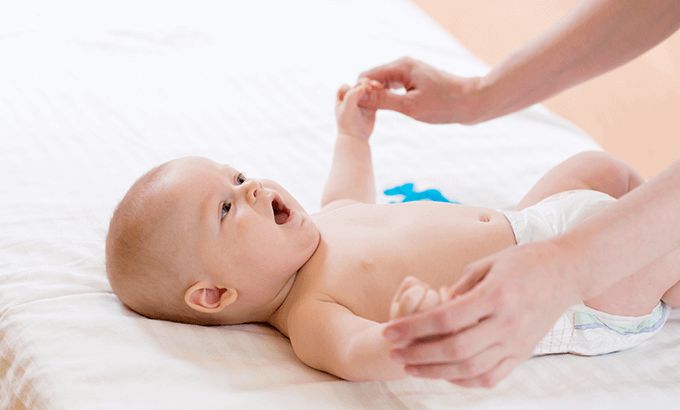
Let him crawl with you
Lie on the floor and watch your baby crawl. (He will do this without encouragement and will continue to do so for years.) It will keep itself afloat while using you as a support.
Create an obstacle course
Create an obstacle for your baby to cross. They'll love climbing tunnels made from boxes, under the chair, or behind the sofa.
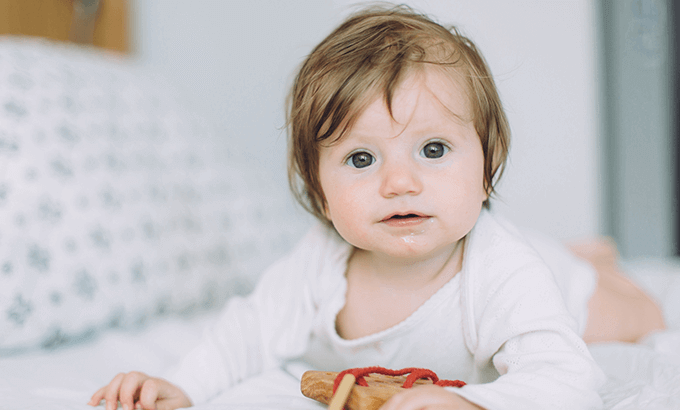
Roll Over
Play with rolling, moving toys like balls and cars. Your baby will sit down and learn this back and forth movement with you or by himself.
Hanimis Hanimis is here
Continue this game by using your hands, blanket, or towel to briefly close your baby's eyes, then lowering what you're closing and letting him see you.
Popping a cake
Make popcorn with your baby, alternatively clap your hands and squeeze them.
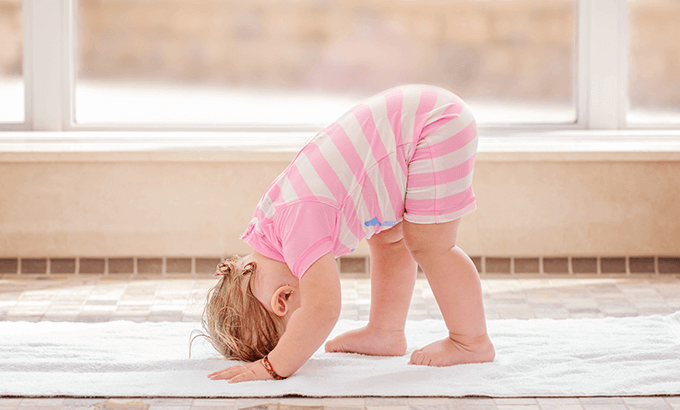
Raising your child
Raising your child: The Complete Illustration Guide is an informative guide that guides parents through a new behavioral adventure, developments, and challenges in a child's first six years. It is filled with the necessary knowledge, expert advice, practical solutions and key choices to ensure the healthy development of the child during the first six years and establishes them for success in the next stage of development. In addition to understanding the child's stage of development, readers are given parenting techniques and activities that they can use with their children to maximize physical, emotional, intellectual, and behavioral development at any age and stage.
Buy Toys.
Do you like the cute products and toys we use for this photo shoot? Use the buying guide below to find products for your baby.
Sensory Development of Your Baby -Touch
Touch is one of your baby's important senses. Touch plays a vital role in bonding with your baby. It also helps your baby communicate his needs and desires, interact with other people, and explore his environment.
How does my baby's sense of touch develop?
Your baby's sense of touch begins to develop in the womb and continues to develop throughout the period following the first year.
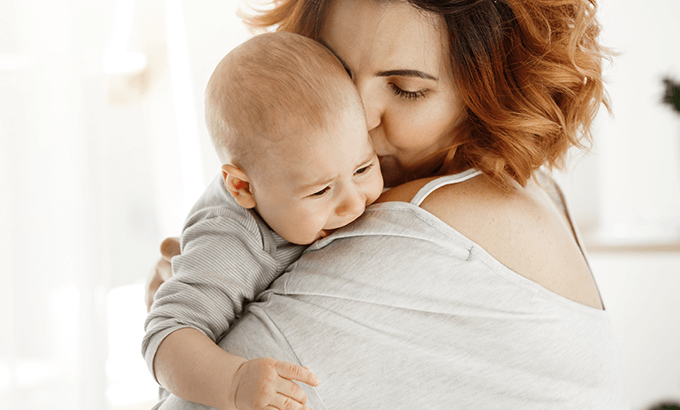
Newborn
When your baby is born, his skin is very sensitive. The parts of his body that are sensitive and hypersensitive to touch are his mouth, cheeks, face, hands, abdomen and soles of his feet.
For a newborn, skin-to-skin contact is a vital part of the baby's bonding and communication with its mother. You can comfort your baby by touching her skin. In addition, your baby may respond to your touching his/her skin with a grip reflex.
Turning your baby's hand with his palm facing up, he will grab your finger if you stroke his palm. In the same way, if you put an object in the palm of your hand, it will hold that object in the same way. As your baby grows, many of these newborn reflexes will disappear.
Your baby's mouth is also very sensitive. Your baby will also use his mouth as a different way to learn and explore.
When you lightly touch your baby's cheek, he will respond to your touch by turning his head and using his mouth to explore your touch.
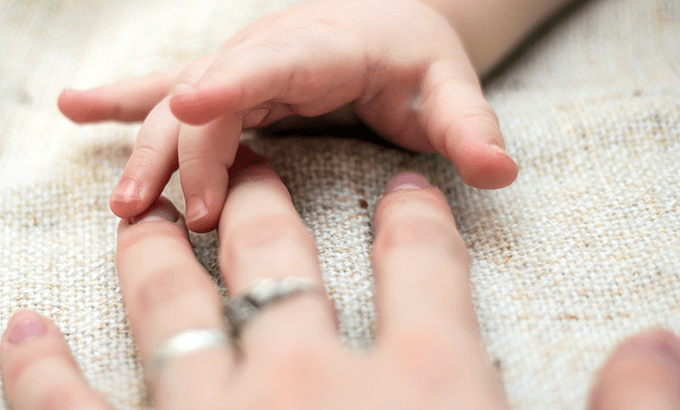
1 month
In the first month, your baby's hands will usually be closed and fist-shaped. However, when his hands are open, he will also be happy to feel your finger in his palm and grasp your finger.
2-3 Months
Your baby likes it when you hold her and touch her. He can respond to you by grasping your fingers with friendly touches. Your baby's tongue, lips, and mouth are soft and tender, and when she tries to chew and bite a soft toy, she tries to use her mouth to feel and explore the texture and surface of the toy.
Your baby cannot grasp objects and take them himself, but he is happy to have different objects given to him. He/she may notice the difference between hard and soft items.
4 Months
As your baby's muscles grow larger and stronger, they begin to reach out and touch objects (especially the muscles in their arms and hands).
5 Months
Your baby can now lift and move objects by holding them with both hands, but she still uses her mouth to feel their texture and surface.
Your baby will probably be happy with the feeling of being in the water, and likewise, splashing around while bathing will make him/her very happy.
6 Months
Your baby's sense of touch is developing. He often passes objects from one hand to the other as he learns to reach out and grasp objects with both hands. He likes toys that he touches and interacts with. You can encourage your baby by giving them toys that make noise when touched.
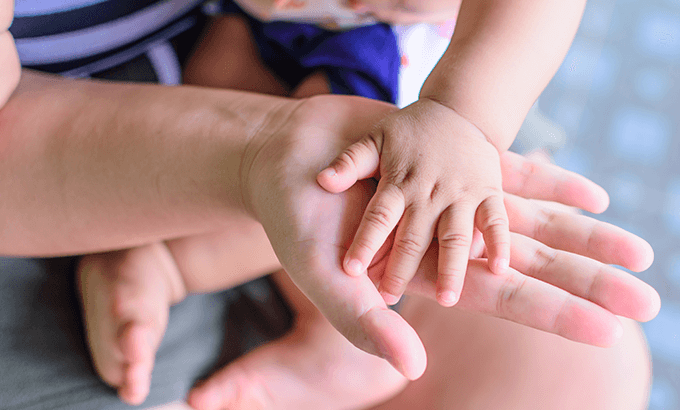
7-8 months
Your baby's planar awareness is developing. Along with the sense of touch, it can distinguish between flat and three-dimensional objects. Your baby will be happy to touch twisted or warped toys that can be held or have a handle, or to be able to hold toys.
Your baby may have started to crawl. You can give your baby more objects to touch and explore.
9th – 10th month
Your crawling baby is much more mobile than before and begins to realize that there are many more objects to touch around.
11th-12th months
At the age of one, your baby begins to discover and perceive all kinds of textures that are hard, soft, cold, wet, sticky and pointed. He now uses his hands instead of using his mouth to examine and feel objects.
Brain Development in Infants
When addressing the issue of brain development in infants, it is necessary to mention the 2 most important lobes in summary:
Frontal lobe
The frontal lobe of the brain is located behind the forehead. The frontal lobe handles behaviors such as walking, talking, problem solving, and some aspects of emotions. Improvement in this area happens when your baby becomes more mobile and verbal. This accelerates between about 6 months and 12 months.
When your baby starts to tickle, the left part of his brain lights up with activity. When he listens to his favorite lullaby or sees a toy piece intertwined, the right side of his brain is in motion.
For most people, language production is controlled by the left side of the brain, while the right side is responsible for interpreting the emotional content of speech with its own tone and rhythm.
The frontal lobe matures over time and takes years to develop. New functions are constantly added in childhood. The brain is so active in childhood that the average 5-year-old uses half of the calories they consume to feed them.

Temporal lobe
The temporal lobe controls hearing, smell, and language comprehension. It works with the amygdala and hippocampus to activate learning, memory and emotional responses.
Hearing is one of the first steps to complete development among babies. A few minutes after birth, newborn children cry out loud, surprisingly. Because this early physical development develops long before your baby is born.
Research shows that the inner ear is the only sense organ that is fully formed before birth. The inner ear reaches adult size in the middle of pregnancy.

Smell develops early in your baby's life. Researchers say premature babies born at seven months of gestation respond to smells, and so the necessary tools for detecting smells mean that they function even before birth.
Even in their first days, newborns react to smells and smile with sugary smells while showing a crumpled facial expression to unpleasant smells such as rotten eggs. By the end of their first week, a baby becomes able to turn to their mother's pacifier soaked in milk, but they ignore the milk of other breastfeeding mothers.
When Does Your Baby Start Remembering People?
According to experts, the memory of small babies is not yet very well developed. This is because the parts of memory that will enable them to remember objects and people have not yet developed. Memory episodes of infants begin to develop from 6 months of age. From the 6th month, babies can start to remember things. According to experts, babies' recall of people is closely related to the frequency of seeing them. For example, if your baby sees his grandparents every week, he'll probably recognize them when he's 6 or 9 months old. In fact, if he sees them every day, his memory will be refreshed, so even a few weeks will be enough for him to start getting to know them. You can see it by smiling when their faces are familiar to your baby.
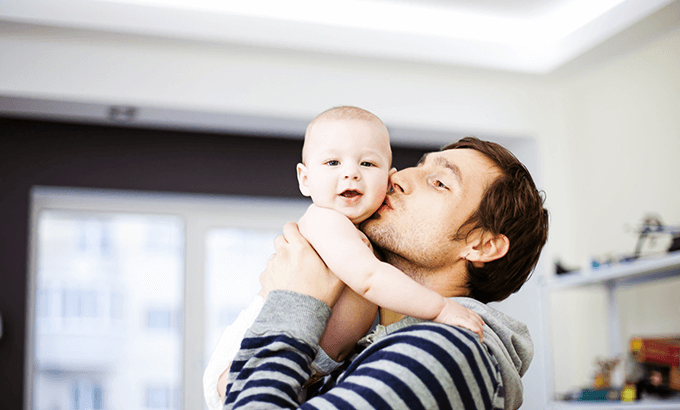
You may be surprised when your baby can't remember someone he only sees once a month. It may even take a few years for your baby to remember the people he sees once a month. You can also use pictures or video calls of people your baby has seen before to strengthen their memory. In addition to improving the memory of people, creating routines and showing similar things to your baby will be very useful in improving the memory department.
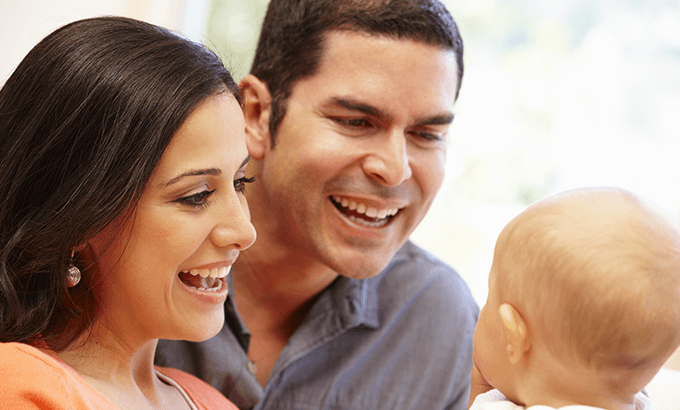
Recognition of objects and people in your baby's general memory works in different ways. People can change and look different at different times. Your baby's recollection of changing people is very closely related to how he records people in his memory. For this reason, you may be quite surprised that he/she sees a lot of people and that the frequency of seeing these people contributes to improving his/her memory.

How Does Your Baby Talk?
Little ones love to talk, including those who don't know many words. Talking helps them develop communication skills other than having fun. Here are 6 ideas on how to talk to babies:
Remind them of the day again.
For babies, every day is an adventure. Buying an apple, washing the car, or picking up items left for dry cleaning can be excuses to talk. Every night before going to bed, talk about the events of the day. If your child is still having one- or two-word conversations, you can learn the details with very specific questions. Let's say your child tells you that they're on the playground. Get more details with questions like: Who took you there? Who did you play with? Which toy did you like the most? Ask your questions in a way that causes you to give more detailed answers than yes or no. Reviewing the events of the day can be particularly helpful to parents of children in day care, as it helps you keep track of your child's activities.
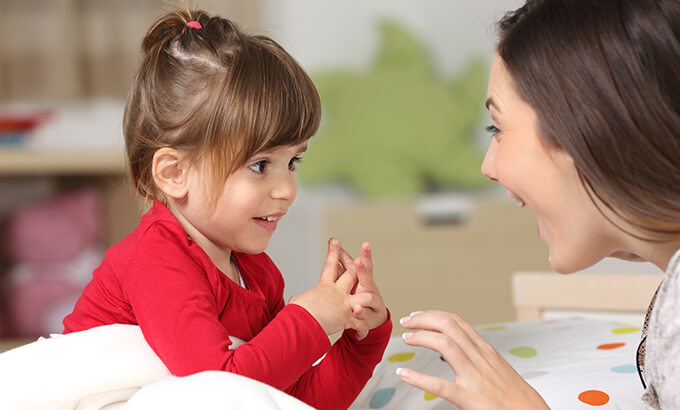
Read with a pause for the duration of the story.
After reading Good Night Bear for the hundredth time, don't be too surprised to learn that your child has memorized this story. It is a way in which he can demonstrate his skills to put his ever-evolving verbal skills into practice. Start reading one of his favorite stories and let him fill in the blanks without reading a few places from time to time. Or ask her to repeat some chapters after reading them. Each time you read the book, stand at a different point in the story so that you can work on the pronunciation of new words.
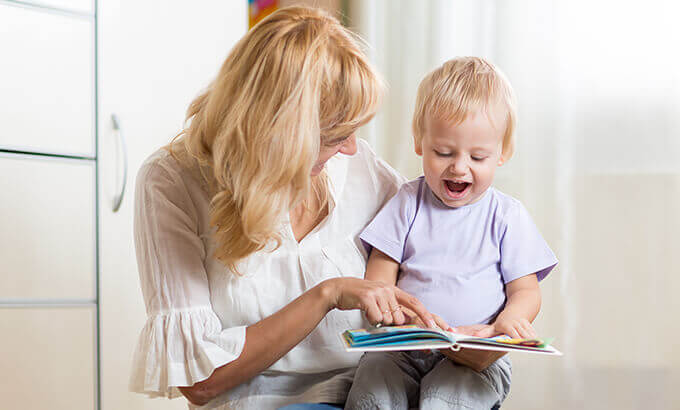
Play word games.
The conversation is extremely engaging when it turns into a game. Small babies ask, “What is this?” He will enjoy a game called. When you are in a new environment, it can be a cafe, airport or market, you can show something and ask “What is this?” . Help your child find the right name. Start with a few simple objects to avoid pushing him too hard - it could be a cat or a snack, make sure he knows that object. Then try to make them say a new word every time. If he doesn't know, whisper the answer and let him say it. Then tell him what the object is and how it works. For example: “This is an umbrella, we use an umbrella to avoid getting wet in the rain.”
Toddlers ask, "What Happens Next?" They will be pleased with a slightly more complex game called. Start telling your child a story, and as you begin to delve deeper into the story, let him or her guide it. I asked him, "Did the dog come?" or "Who did he go to?" help him/her complete the story by asking questions such as.
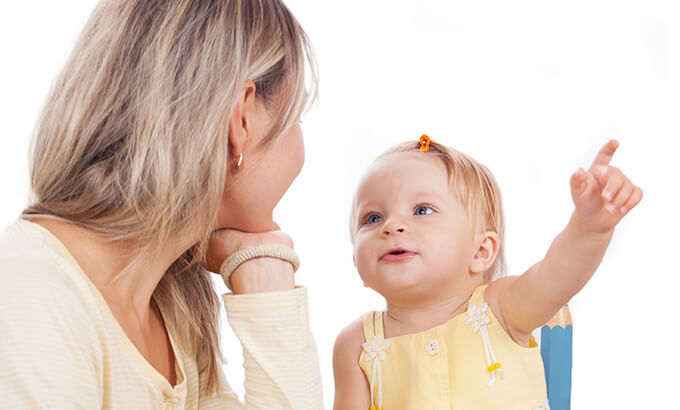
Have them chat on the phone
Most children begin to have a fascination with phones long before they can speak. Use this temptation to chat. Call and hold the phone open to say hello to friends and family. He will be motivated by outside help without any visual clues. Ask the caller to ask simple questions. If he can't answer them, comfort him with some questions of your own. For example, “Can you tell Grandma what you had for lunch today?” Or “What toy did you play with in the sandbox this morning?”
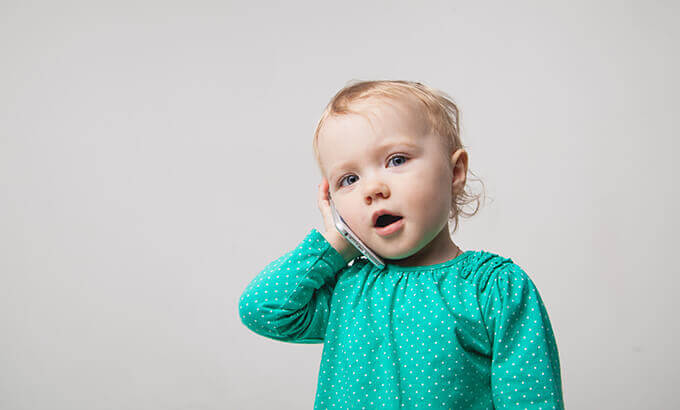
Involve him in the discussions.
Don't underestimate your little one, you can be sure she's heard everything that's going on at home. Try to include him/her in the conversations, ask him/her for his/her opinion. For example, if you and your partner are trying to decide what color you should paint the bathroom, ask your child about problems with it. “What color do you think we should paint the bathroom?” Even if you decide to do something different than he or she says, you can still ask your child for ideas.
Record it on video.
Most children like to be seen on camera. Turn on the camera, shout “record,” and see how your child reacts. Some children need no encouragement at all and take immediate action. Others may need a little more encouragement. Ask your child to sing their favorite song. Ask a series of questions, pretend you're being interviewed. Play the video right away to get him interested. After seeing and hearing himself/herself, he/she will be more excited to deliver a higher performance.
How Does Your Baby's Sense of Taste Develop?
Your baby's sense of taste is extremely good after birth, and the taste buds in his mouth develop further with different flavors.
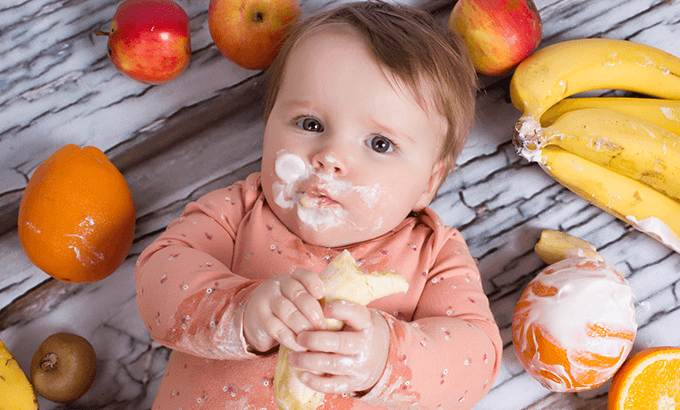
From birth to the 3rd month
At this stage, your baby's sense of taste is very sensitive. In fact, when a baby is compared to an adult, the taste buds in its mouth are stronger than the taste buds in the adult's mouth. In newborn babies, the taste bud can be found on the tongue as well as on the back of the tonsils and throat.
During the first three months, your baby can distinguish sweet and bitter tastes. They prefer sweet flavors like breast milk.
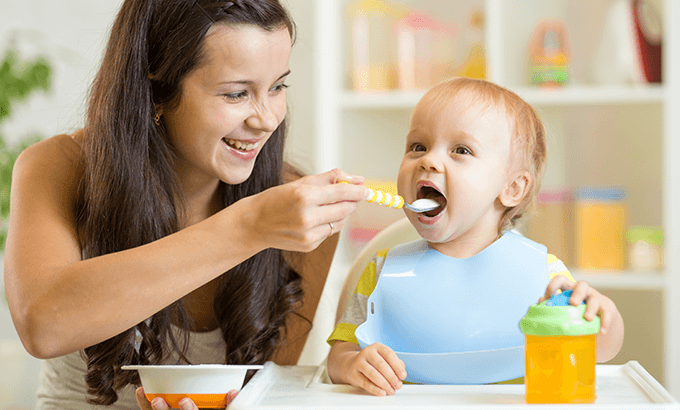
Between 3 - 6 months
By 3 months of age, your baby's tongue has grown. You may notice her putting things like toys or blankets in her mouth. This shows that he uses his language to try to understand different textures and tastes.
At about 5 months, your baby's sense of taste changes and she/he may be more responsive to salty tastes. Still, it's not a good idea to give your baby salty food at this stage.
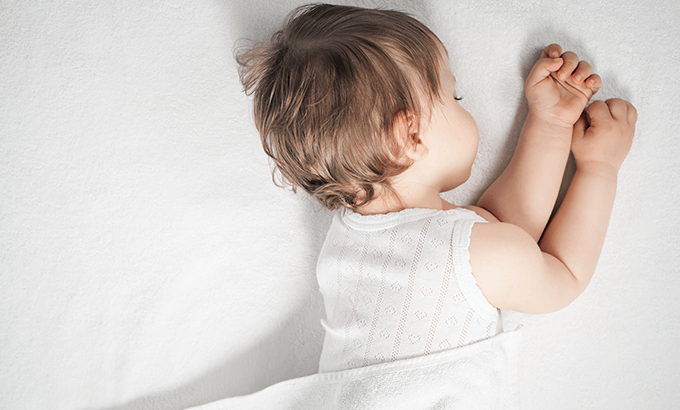
Between 6-12 months
At 6 months of age, the taste of the solid foods you will give after breast milk and formula may surprise your baby. After getting used to the taste of milk, it is quite natural for the her/him to react to other foods.
When you start solid food, you will find that your baby immediately likes the taste of the new food. It is also likely that he/she will refuse certain foods and you may need to try to feed the refused foods a few more times. Experts argue that your baby needs to try the food at least eight times to decide whether she/he likes it or not.
At about 7 or 8 months, your baby has the skills to try solid foods on her/his own. This is a good opportunity to try new flavors and explore different textures with the help of a variety of soft fruits or vegetables.
Your 5-Month-Old Baby's Movement Ability
Between four and five months, most babies reach their first major milestone: Head control.
By the end of this month, the baby can hold her/his head still while sitting. He/she can also learn to turn his/her head left and right, which allows him/her to track moving objects and detect directions where different sounds are coming from. Once your baby has fully learned to control his/her head, he /she has acquired the skills needed to sit. The time has come for this anyway. As the baby gets older, he/she gets bored of lying on his/her back and face down and wants to spend more time sitting. This month and the next month, your baby will try to sit on his/her own. When lying face down on the floor and playing, lifting the head and chest up to see the toys are useful exercises that help to strengthen the neck muscles and gain head control, enabling the baby to sit up.
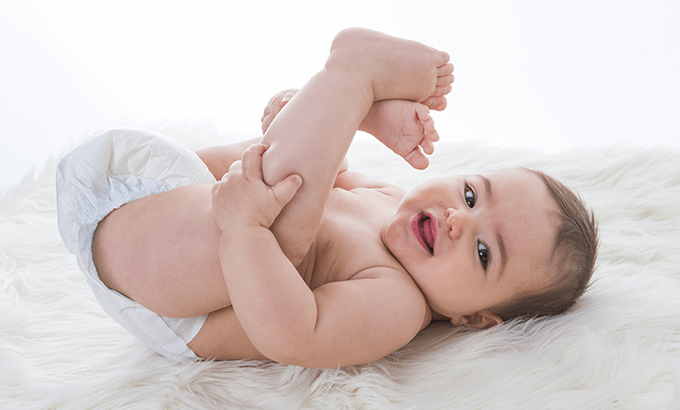
Rolling
At this stage, the baby also makes progress in rolling attempts. At the end of this month, he/she can turn to both sides without any help. When babies learn to roll over from front to back and back to front, they can roll over from the supine position you put them in in the middle of the night. If this happens, do not try to turn him/her on her/his back again.
Reaching out and grasping by hand
In the fifth month you may notice that your baby tries to reach for a toy or any object. At first, she/he may just be able to reach the toy, but she/he may not be able to hold it with her/his hand on her/his first try. A 4-month-old baby can move objects by hitting them. But over time, he/she may try to hold on to larger objects by pressing with the palm of his/her hand and curling his/her fingers around the object. When the baby manages to hold a toy, he/she can grab it with both hands and shake it with pleasure. Rocking toys are still a source of fun for him/her and help him/her further improve his/her eye-hand coordination.
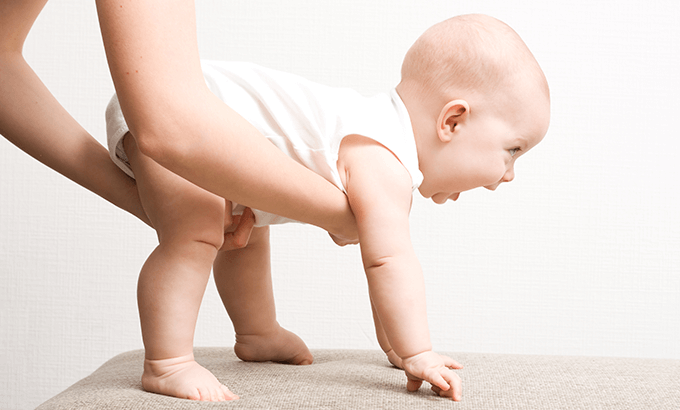
Bouncing
A 4-month-old baby enjoys standing upright, standing on your lap and jumping. Your baby's jumping is part of her/his normal development and does not cause any damage to her/his hips, legs and feet. A 5-month-old baby can put all his/her body weight on his/her legs. She/he still has a long way to go before she/he can stand and walk on her/his own, but it is impossible not to notice that she/he is slowly making progress towards moving more.
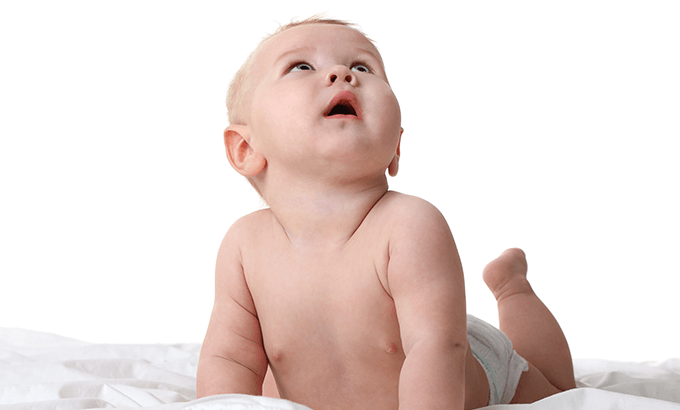
Encouraging physical activity
When you take a look at baby stores, you can't help but be amazed at the variety of items sold for babies; swings, portable playpens, baby seats, stationary activity centres, walkers, baby gymnastics equipment and mother's laps. The idea of trying to give physical support with tools to babies learning a lot of new skills can be appealing to parents. Most tools for babies are sold to help the baby reach a new milestone, such as sitting and walking. But what is true? What babies need most to develop their motor skills is freedom of movement in a safe environment that allows them to explore their environment and practise their budding skills, with an adult standing by their side and watching them carefully. It is also important for the baby to be in warm contact with the caregiver during playtime.
Development Table in Infants
Initial measurements:
"The average weight of babies born at 9 months is between 2.31 kg and 3.9 kg, and their height is between 48 cm and 53 cm. The circumference of their heads is approximately 34 cm.
If your child is above average, it is probably;
- You and your partner are above average.
- Your baby is a boy.
- You experienced diabetes during pregnancy.Your pregnancy lasted longer than it should have.
If your child is below average, it is likely that;
- You and your partner are below average.
- Your baby is a girl.
- You have been exposed to high blood pressure or asthma during pregnancy.
- You had irregular eating habits during pregnancy.
- You have given birth to two or more babies.
As you can see, there are many factors that can affect the size of your baby. For this reason, it is not possible to predict the size of your baby in later ages or in adulthood. It is not possible to say that a baby born below the average will be a petite person or that a baby above the average will grow up to be tall and robust."
Initial checks:
Most parents worry that their baby will lose weight in the first few days, but this is normal. Because babies are born with extra body fluids, and in the first five days after birth, they lose these fluids. In the next five days, they regain this lost weight. In other words, they reach their birth weight again approximately 10 days after birth. Most babies start to gain weight rapidly after this point. In every birthcontrol, your pediatrician regularly checks your baby's weight, height and length of the circumference of the head. The development graph in question was created using national data. Your doctor uses the development chart with the same gender and age as your baby.
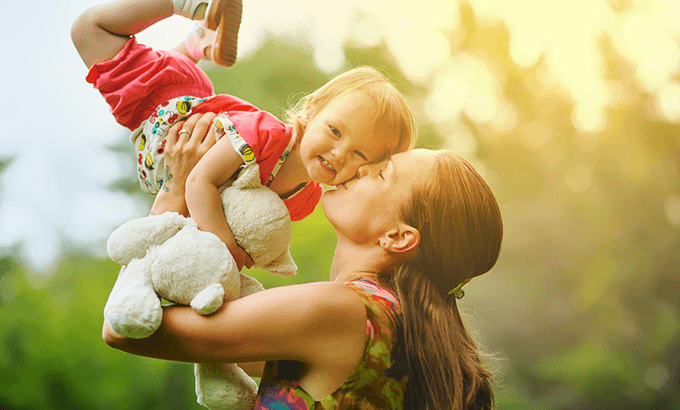
- "From birth to one month of age, newborn babies take about 30 grams daily and grow about 2 centimeters.
- During the following three months, the babies gain about 750 grams of weight per month and grow about 4 centimetres per month. During this time, babies start to look overweight, but as their movements increase, these fats will turn into muscle.
- By the end of the first six months, most babies reach about twice their birth weight.
- By the end of the first year, most babies reach about three times their birth weight and are about 25 cm above their height at birth.
- By the end of the second year, most babies reach about four times their birth weight and are about 35 cm above their birth height."
During the postnatal check-ups, your doctor will measure your baby's height and weight, as well as the circumference of the head to monitor the growth of the baby's brain. In order for your baby's brain to grow, your baby's skull must also grow. During the next four months your baby's head will grow rapidly, from an average of 33 cm at birth to about 45 cm by the end of the first year. In the second year, it will grow about 3 centimeters larger and approach the size of an adult head.
Most parents begin to worry about the situation when their baby rises above and falls below the average. While these concerns are acceptable, it is important to keep in mind that if your baby is growing steadily and regularly, there is probably no problem.

Change of development model
Usually, babies show a steady growth pattern in the first six months. However, sometimes the growth of the baby may deviate from its previous stable state, but these are not always a sign of a health problem.
Apart from genetics, your baby's activity level can cause a slowdown in weight gain. A baby who has just started crawling, cruising, or walking will burn more calories than a baby who spends most of their time sitting in one place. Moreover, a baby who has realized his capacity to explore the wonders of the world may not be too eager to stop and eat himself.
Finally, there is also the potential for the disease to reduce your baby's weight and temporarily change the growth pattern. Fever or a period of diarrhoea or vomiting can cause the baby to lose fluids and its weight may drop. However, usually, a mild illness, such as a cold, does not affect the baby's overall growth rate.
Of course, most changes in a child's growth pattern can be explained by normal life changes, but you should always tell your paediatrician about your concerns about your child's development. If there is no obvious reason for change, he/she will want to take things further and evaluate them.

Identifying the Problem
If your pediatrician is worried about your baby's growth, he/she will ask about your child's eating habits and how many calories your child eats in a day so that he /she can be sure that he / she is eating. In addition, your doctor will ask about your baby's developmental milestones, recent illnesses, and other behavioral and social conditions. She/he will examine the baby, looking for signs of a physical problem.
The growth and development of a baby is an area of great excitement and concern for parents. Getting information, taking the baby to newborn checkups, and working with the pediatrician make you less anxious during these spectacular times of change.
When Can My Baby Hold His/Her Bottle?
Some babies have fine motor skills necessary to hold a bottle and be able to drink on her/his own, but this process is the earliest 6 months for most babies. Infants in the other minority also acquire this skill at the latest at 10 months of age. The only way to tell if your baby can hold her/his own bottle is to give her/him a bottle and watch what happens. If he/she has the motor skills to put the bottle in his/her mouth and can now understand that he/she will put it down when he/she is full, you can try giving him/her a bottle every day.
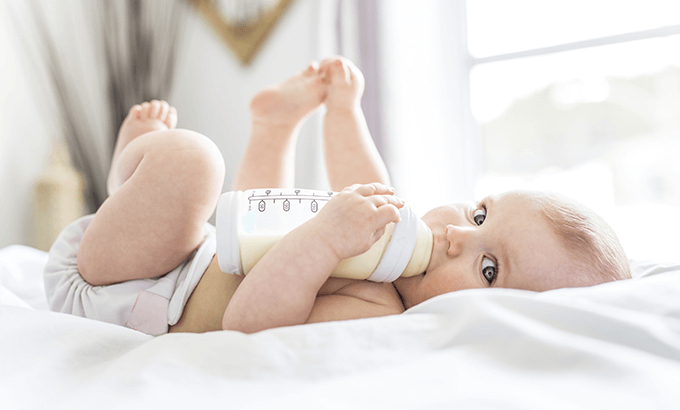
But no matter how many months your baby is, don't be tempted to speed up the feeding process by putting a bottle in her/his mouth. An unsupported bottle ritual can force your child to overeat or even suffocate.

Apart from that, if your baby falls asleep with the bottle in his/her mouth, formula or breast milk may collect around his/her teeth and cause tooth decay. In order to prevent tooth decay, you should not let him/her sleep with a bottle constantly and leave him/her alone with the comfort of this situation while feeding with a bottle.
According to doctors, bottles can also increase your baby's risk of ear infection. If your baby is lying down during feeding, the fluid can flow from the mouth to the eustachian tubes of the ears, where it can be transmitted and cause infection.

Another important reason not to feed him/her with a bottle or not to let it hold herself/himself all the time:
You can reduce the time you spend alone with your baby and deprive them of your love. Holding and hugging your baby during feeding gives him/her a sense of safety and security and helps to increase his/her trust in you with love.
Is It Normal for Your Baby to Sleep with Eyes Open?
This may seem strange to you, but it's perfectly normal. Some babies and adults sleep with their eyes slightly open. Medically, sleeping with your eyes open is harmless, quite common among infants, and does not indicate that your child has a sleep problem.

No one knows exactly why some babies sleep with their eyes open. Although there is not much research on this topic, doctors say it may be due to babies spending too much time in deep sleep.
The deep sleep phase in which babies sleep with their eyes open is an active sleep cycle, and babies spend about 50percent of their total sleep time in REM sleep more than adults. However, if your baby's sleeping condition bothers you, you can close the eyelids slowly.

You can consult your child's doctor if your child dries or irritates his/her eyes because he/she sleeps with his/her eyes open for hours. In very rare cases, discomfort of the eyelids can prevent their normal closure. But if this is not the case, there is no need to worry about this.

In the meantime, there is some evidence to suggest that sleeping with your eyes open is hereditary. If you notice your child sleeping with a blank, absent-minded look, ask your partner if you've ever slept with your eyes open.










